Video Tutorial Combustion of Alkanes
Quick Notes Combustion of Alkanes (as fuels)
- The combustion of alkanes releases large amounts of energy, making alkanes useful as fuels.
- Energy is needed to ignite a fuel and start a combustion reaction
- Shorter chain alkanes are highly volatile and easy to ignite
- Longer chain alkanes are less volatile and harder to ignite
- Two types of combustion can occur -
- Complete Combustion
- Carbon Dioxide (CO2) and Water (H2O) are produced
- Alkane burns with a clean, blue flame
- Shorter chain alkanes are more likely to undergo complete combustion
- Incomplete Combustion
- Carbon Monoxide (CO) or Carbon (C) soot and Water (H2O) are produced
- Alkane burns with a yellow, sometimes smokey, flame
- Longer chain alkanes are more likely to underdo incomplete combustion
- Combustion of sulfur containing fuels causes sulfur dioxide (SO2) to be released into the atmosphere, this can lead to acid rain
- High temperature and pressures inside internal combustion engines causes nitrogen and oxygen to react together, forming nitrogen oxides (NOx), that can lead to acid rain.

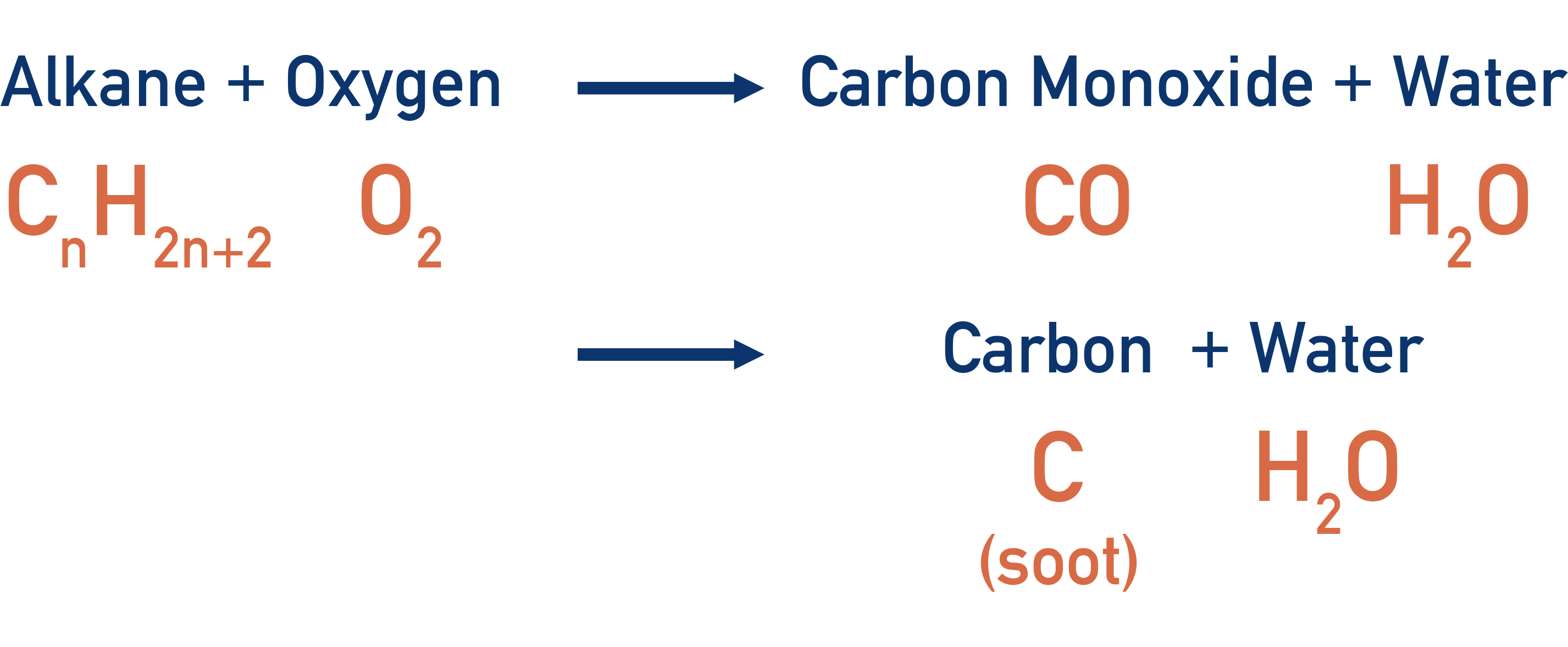
Full Notes Combustion of Alkanes (as fuels)
Heat energy is released when alkanes undergo combustion as the process is exothermic. This released heat energy can be harnessed and used for other things - such as generating electricity. This makes alkanes useful as fuels.
A substance that has stored energy inside that can be released to do useful work.
Combustion describes the reaction that occurs when an alkane rapidly reacts with oxygen, at a high temperature.
Starting Combustion - Ignition
To get a combustion reaction to start, energy is needed.This is why you need a match to light a candle. The small flame of the match gives enough energy to kickstart the combustion of the alkanes on the candles wick.
Giving this energy and starting the combustion process is referred to as ignition.
Longer chain alkanes need to be given high amounts of energy to start combusting and are harder to ignite than shorter chain hydrocarbons.
This is because alkane molecules must be gaseous in order to combust. It doesn't matter if the fuel itself is liquid or solid, the alkane molecules in the fuel have to be made gaseous in order for combustion to happen. As longer chain hydrocarbons are harder to vaporise and turn into a gas than shorter chain hydrocarbons, more energy is needed to kick start combustion of them.
As a result, short chain alkanes like methane combust very quickly and only need a small spark for ingition. Whereas long chain alkanes need much more energy to start combusting.
Complete and Incomplete Combustion
When combustion occurs, the carbon and hydrogen in the alkane get oxidised and gain bonds to oxygen atoms.
The hydrogen in an alkane will always combust to form water, H2O (as H2O is the only stable oxide of hydrogen that is going to be formed).
Carbon can form two different oxides during combustion - carbon dioxide (CO2) and carbon monoxide (CO). Carbon dioxide is more stable than carbon monoxide and as a result is always the preferred product of carbon combustion. Carbon monoxide is also a toxic gas, see below.
If carbon dioxide gets produced, the combustion process is called complete combustion.
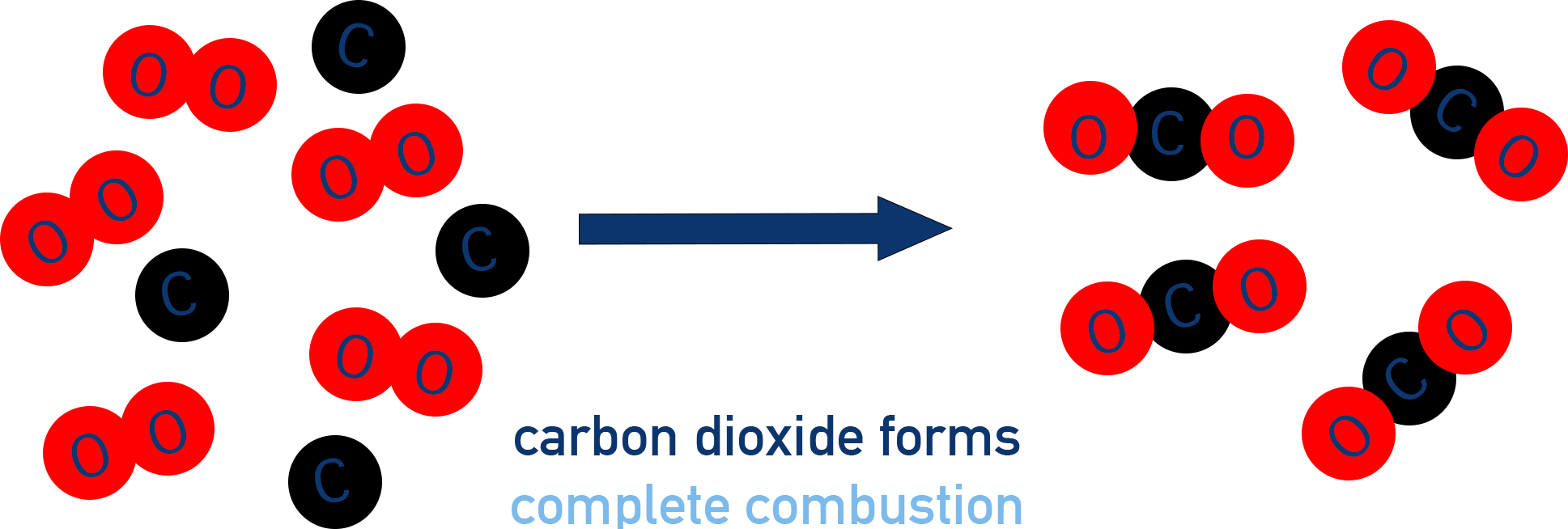
The only problem is that carbon dioxide requires more oxygen to form (per mole of carbon) than carbon monoxide does.
In carbon monoxide, there is only one oxygen atom per carbon atom, in carbon dioxide however, there are two oxygen atoms per carbon atom. This means forming carbon dioxide requires larger amounts of oxygen per mole of carbon.
If during a combustion reaction, oxygen levels fall too low, there simply isn’t enough oxygen available to form carbon dioxide from all the carbon atoms in the fuel.
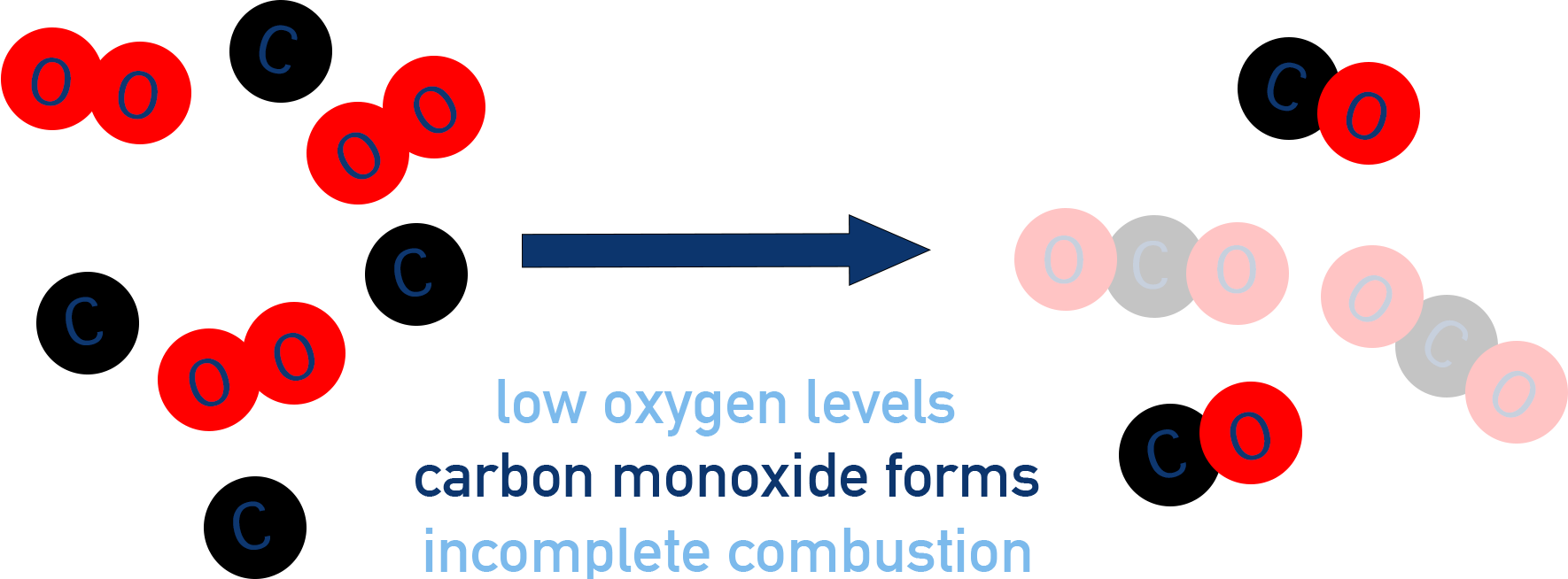
As a result, carbon monoxide will start to be produced and the combustion is described as incomplete combustion.
In extreme cases, if the oxygen levels get very low, some carbon atoms can’t be oxidised to oxides at all, and solid carbon gets produced.

This is called soot and can be seen as black particles in a flame, often referred to as a ‘smoky’ or ‘sooty’ flame.
For complete combustion, an alkane will burn with a clean, blue flame.
For incomplete combustion, an alkane will burn with a yellow, sometimes smokey, flame.
More energy is released per mole of alkane for complete combustion compared to incomplete combustion.
Why is carbon monoxide (CO) toxic?
Carbon monoxide is a poisonous gas that limits the bodies ability to carry oxygen in blood.
In blood, oxygen binds to a substance called haemaglobin in red blood cells and then gets transported around the body - being ‘delivered’ to wherever it needs to go. Carbon monoxide is better at binding to haemoglobin than oxygen (high affinity) and doesn’t ‘let go’.
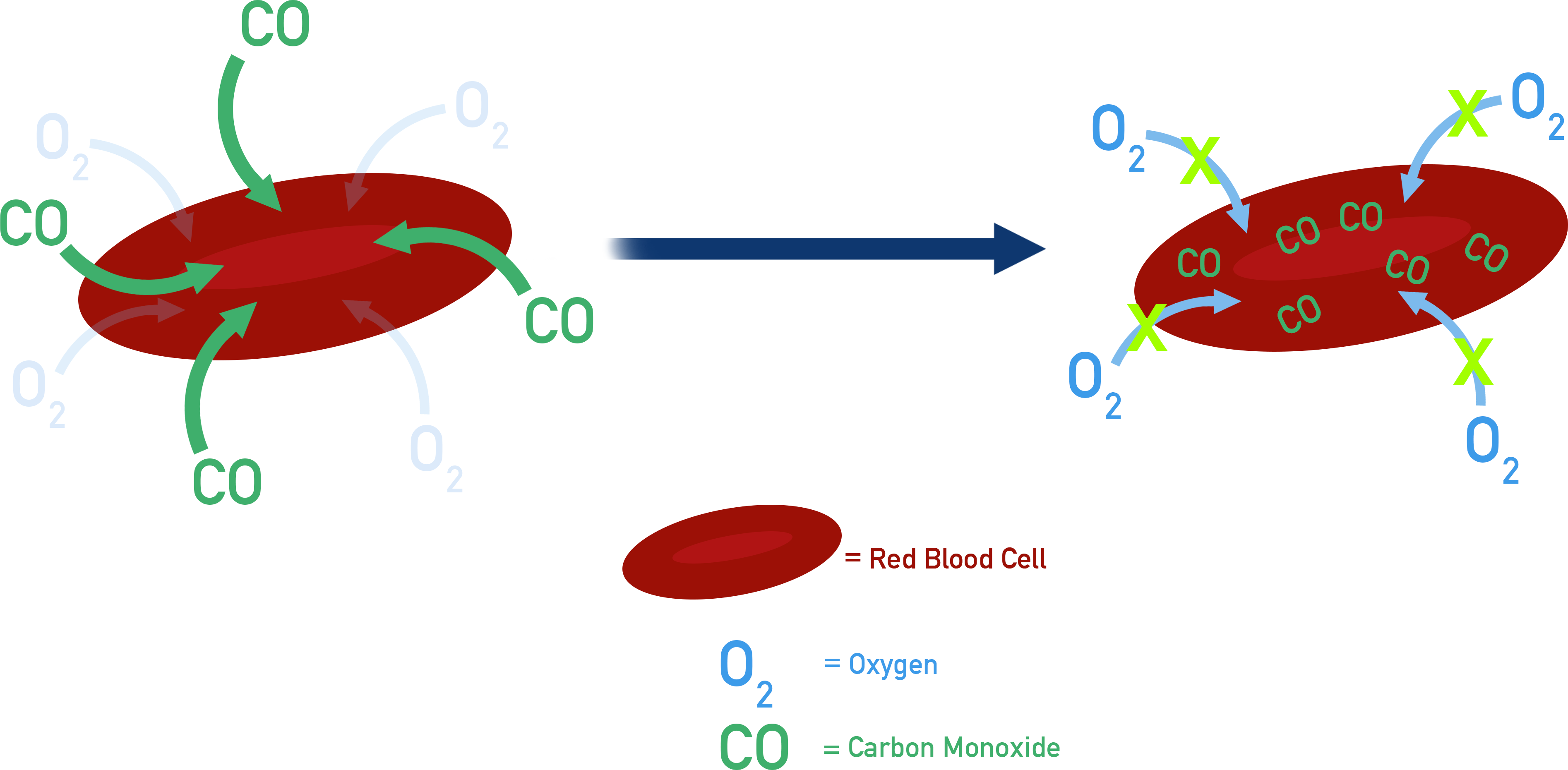
As we breath carbon monoxide into our lungs and its level in the blood increase, less and less haemaglobin in red blood cells is left available to transport oxygen. As a result, cells in the body simply cant get enough oxygen to function properly.
This can become very serious and lead to death. The incomplete combustion of alkanes - especially in indoor spaces or enclosed environments - is very dangerous. Adequate supplies of fresh oxygen and good ventilation of exhaust gases is a legal requirement for any kind of combustion of alkanes indoors - such as for gas boilers or fires.
Pollution and Acid Rain
A big problem with the combustion of alkane based fuels is pollution - the release of harmful gases into the atmosphere.
Asside from carbon monoxide (see above), there are two main pollutants that come from using alkane based fossil fuels - sulfur dioxide (SO2) and nitrogen oxides (NOx). Both are acidic oxides that can form acid rain.
Sulfur Dioxide
Sulfur dioxide is formed when fuels containing sulfur (such as alkane based fossible fuels) combust. Sulfur impurities in the fuel react with oxygen and form sulfur dioxide (SO2).
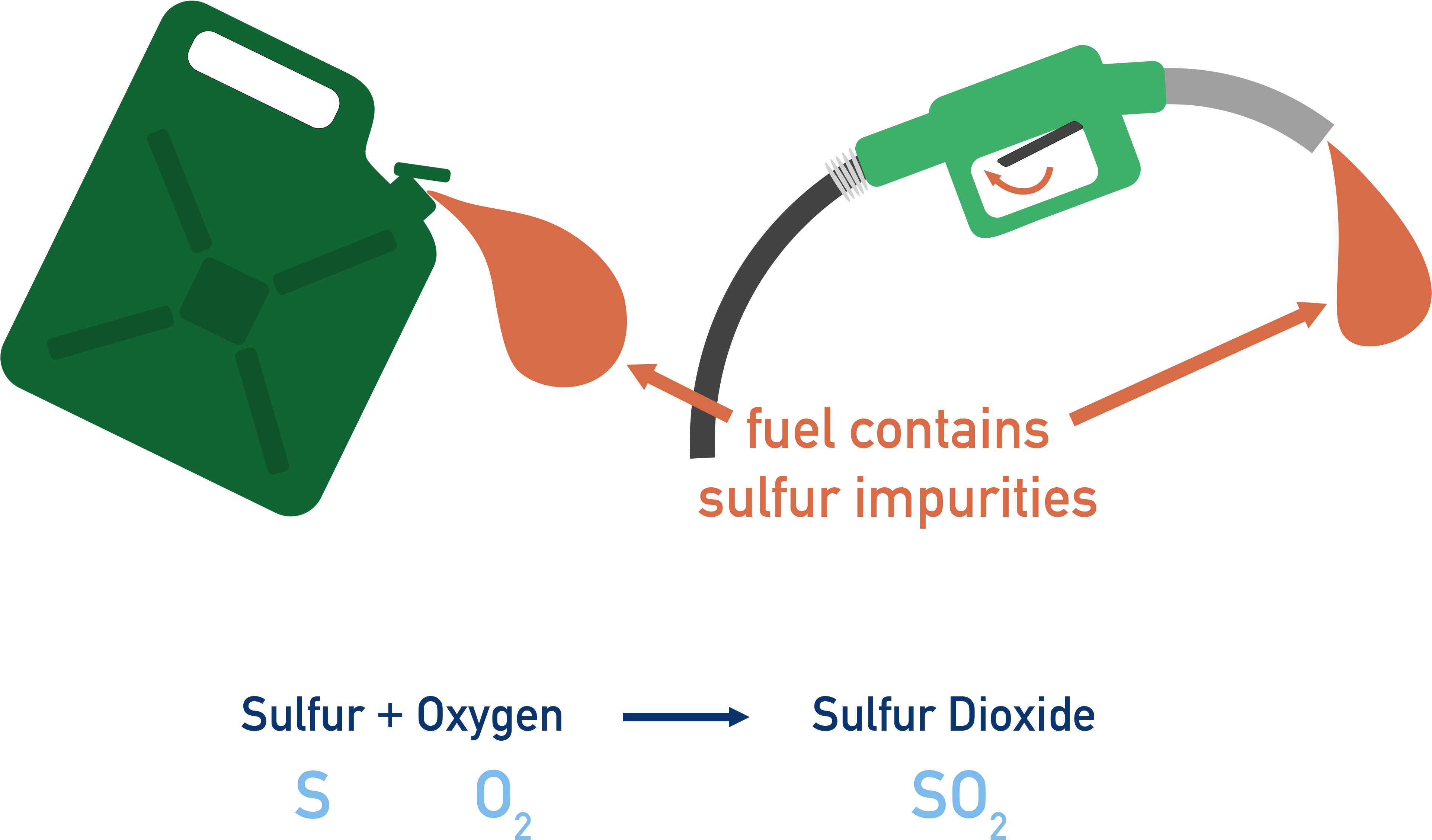
Once released into the atmosphere, sulfur dioxide molecules react with water in clouds and forms sulfurous (H2SO3) and sulfuric (H2SO4) acid. This causes the rain that falls from the clouds to have a low pH (around 5.5) - acid rain.
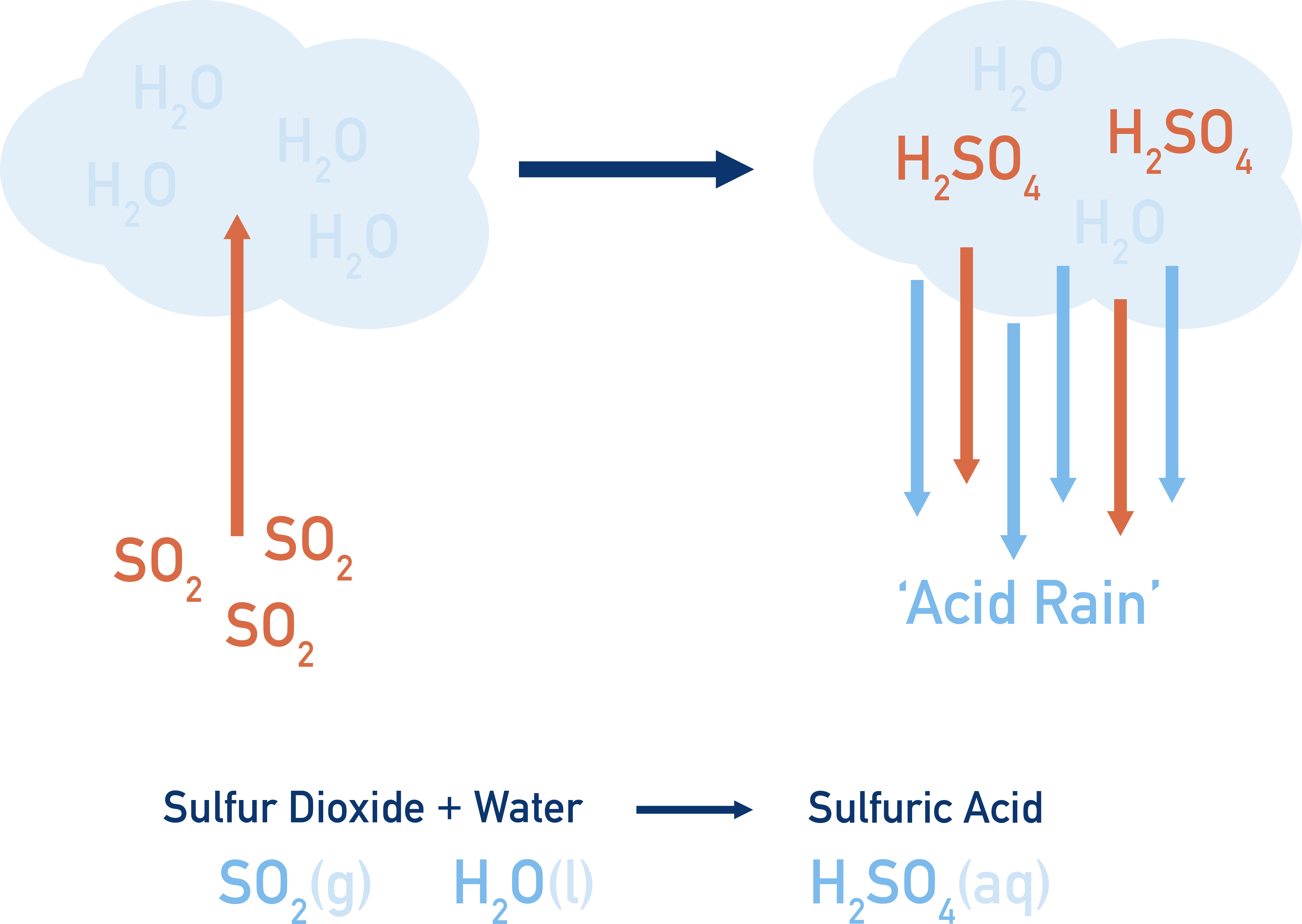
Using low-sulfur fuels can help reduce the emission of sulfur dioxide as well as treating flue (exhaust) gases to remove and sulfur dioxide molecules present.
Nitrogen Oxides
Nitrogen oxides are formed inside internal combustion engines. The high temperatures and pressures force nitrogen molecules (N2) to react with oxygen and form oxides.
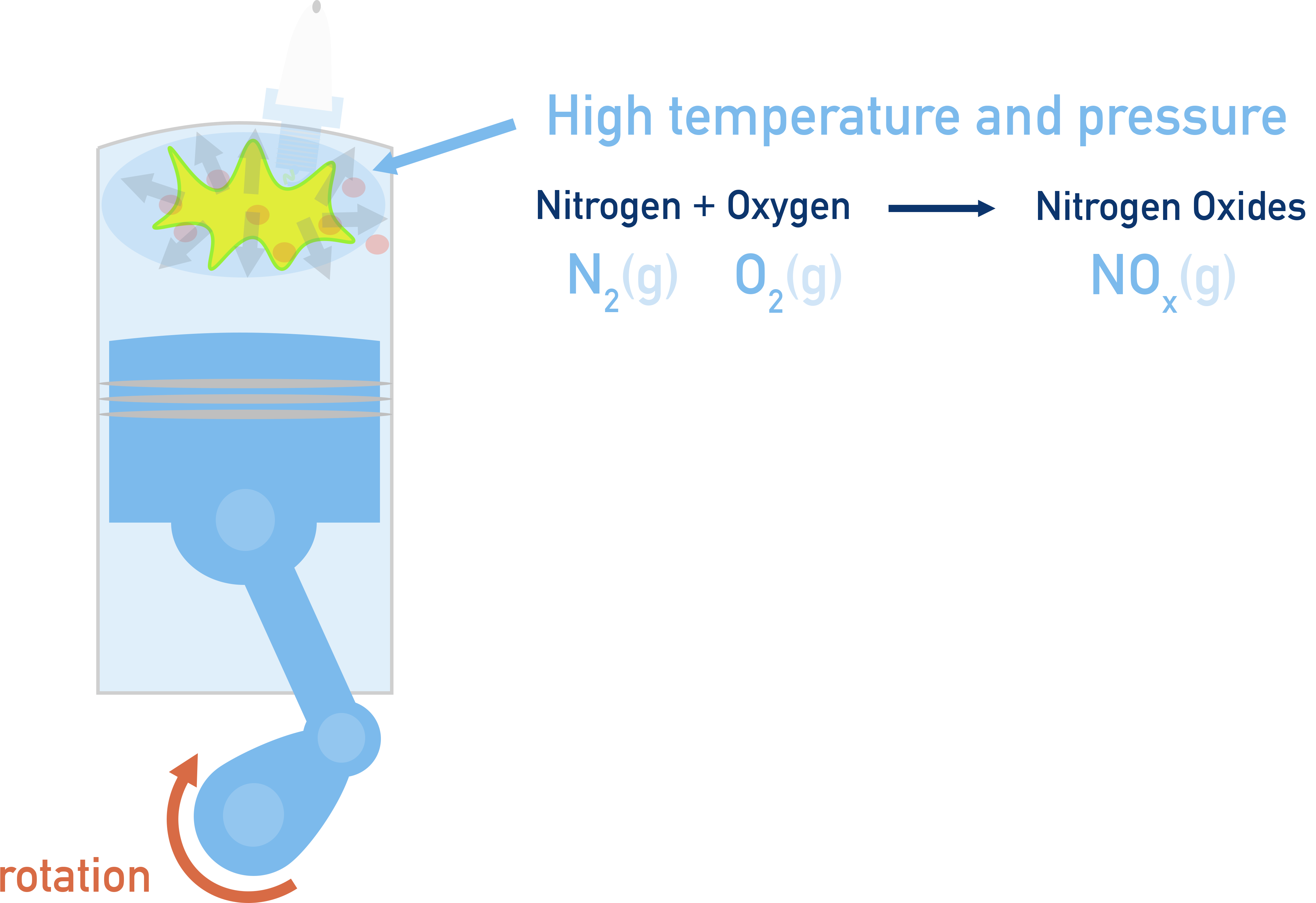
Just like with sulfur dioxide, once released into the atmosphere, the nitrogen oxides react with water in clouds and form nitrous (HNO2) and nitric (HNO3) acid. This causes the rain that falls from the clouds to have a low pH (around 5.5) - acid rain.
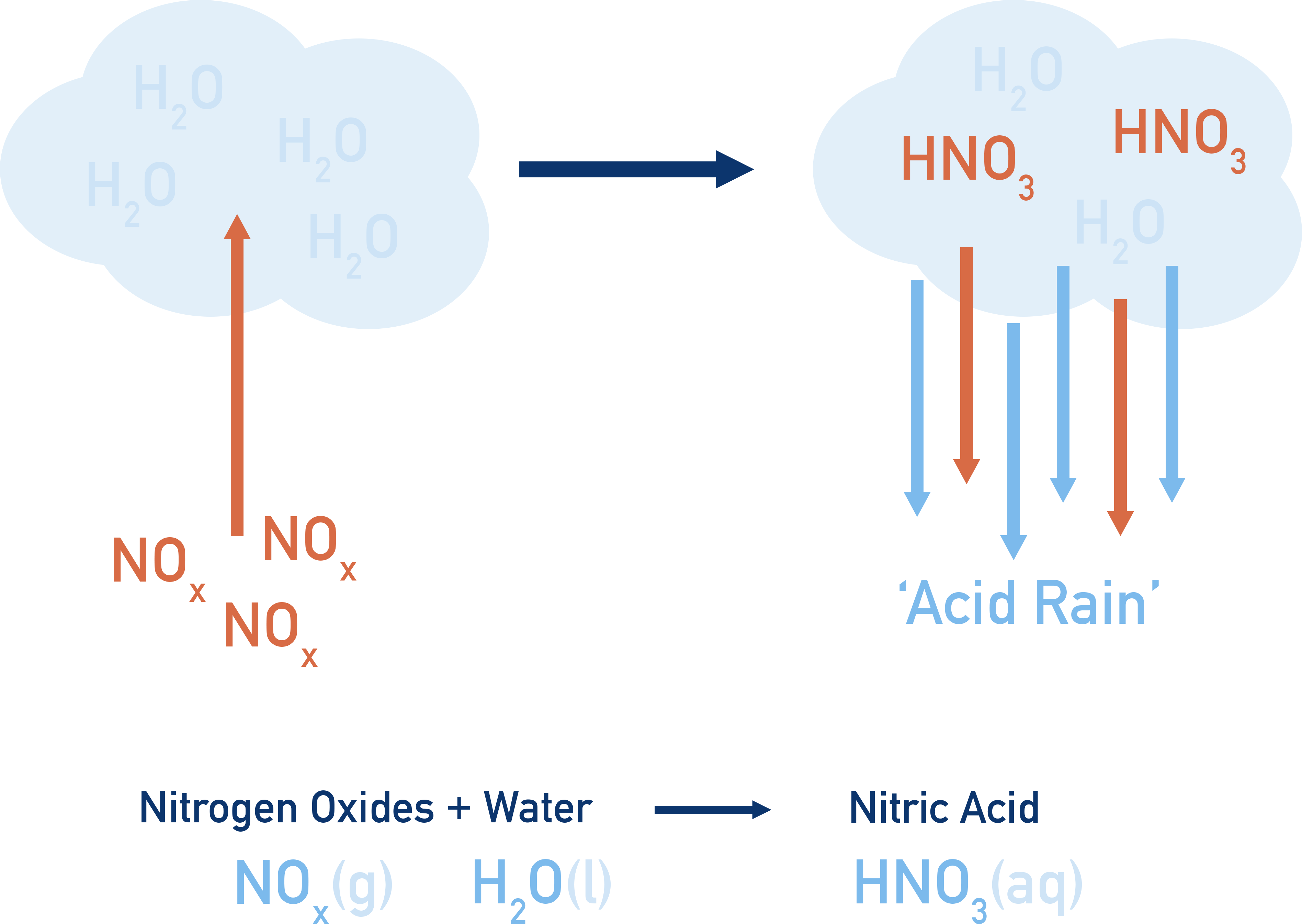
Catalytic converters are used to help reduce the emission of nitrogen oxides from engines. Inside, solid transition metal catalysts help convert the nitrogen oxides into harmless nitrogen (N2) molecules.
We’ve launched our new site! 🎉
Course-specific notes with built-in search!
AP • A-Level (AQA • CIE • Edexcel • OCR) • IB • NCERT 11 + 12
over 750+ new pages and 3,500 images.
Visit the new homepage
